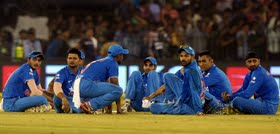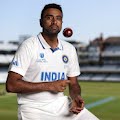There is a striking similarly to the manner in which the careers of two of India's biggest modern-day superstars progressed. Both entered the international scene with a bang, making a name for themselves with their crowd-pulling batting aggression, but as their careers progressed went on to become accumulators of runs rather than master blasters. If you still haven't guessed, we are referring to two former Test captains, who are also two of the biggest ambassadors of the game -- Sachin Tendulkar and current ODI and T20 leader MS Dhoni. The theory has proved to be true in both cases, which a deeper analysis of their careers will confirm.
This query of India's big names altering their natural game to deal with pressure came to the writer's mind having closely observed Dhoni over the last couple of years. And, the mind immediately went back to Tendulkar, whose career took a similar turn once he settled down into the Indian team as a senior member. If you look back at Dhoni's career, he stormed onto the international scene out of nowhere, blasting a marvellous hundred very early in his career. This was followed by a couple of more blistering knocks, which made him an overnight sensation in Indian cricket. With his long locks and rough accent, Dhoni was unlike anything Indian cricket had seen before. 
In total contrast, Dhoni's style of play has taken a 360 turn in recent years. He no longer comes in, and takes on the bowling attack right from the word go. In fact, Dhoni hardly plays an aggressive stroke these days even after getting well set. It is only towards the end of the innings that he goes after the bowling when no other option is left. While he has won India a few limited overs matches with his silent demeanour, it has made him less of a threat as a batsman. Of course, his consistency cannot be questioned, but the kind of fury he unleashed on the bowlers is no longer as prominent. This can be observed in his last few international knocks as well.
The phenomenon was prevalent in Tendulkar's mode of batting as well during the second half of his career. If you take away the year 1998, when he was at his peak, the 2003 World Cup, and 200 and 175 he got towards the end of his career, aggression wasn't a major part of Tendulkar's repertoire. In fact, he crawled to his much over-rated 100th international hundred against Bangladesh, an ODI India lost. It is not difficult to figure out why superstar batsman undergo such a significant alteration in their batting style. Once you become a big name in India, with it comes massive adulation and expectation. In an indirect sense, a player is told that he cannot fail, and that reflects in the modified version of a player.
The shift in batting mode seems more like an Indian phenomenon as opposed to one that applies to big names from other countries as well. If you observe the likes of Adam Gilchrist and Ricky Ponting from Australia, Brian Lara from West Indies or over Herschelle Gibbs from South Africa, they never toned down their game. From the start to the end of their careers, they adopted the same aggressive approach, and were extremely successful as well. Of course, the difference between Indian players and the others is that the latter are not constantly put under a microscope, and judged. The flip side of hero worship can be seen in how India's biggest stars have to adapt, to live up to massive expectations of fans.
-- By A Cricket Analyst














